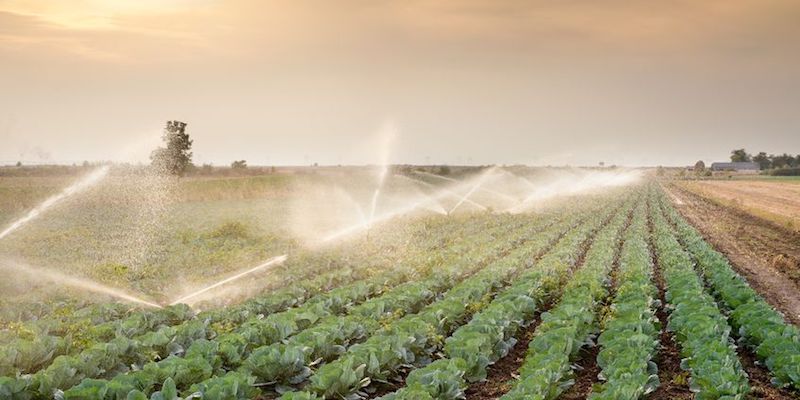Practices like water reuse can help farmers effectively irrigate their crops without endangering freshwater resources.
The trick is maintaining a balance between food production and water security
Changes in rainfall patterns due to climate change can hamper food production, posing a risk to food security worldwide unless production is expanded.
According to a new study recently published in Environmental Research Letters, sustainable irrigation could alleviate these risks, increasing supply to provide food for more than a billion additional people using our current farmland without having to convert natural ecosystems into agricultural land.
The study’s author, Lorenzo Rosa, a principal investigator in Global Ecology at Carnegie Institute of Science, said:
Population trends indicate that we will need to double global food production by 2050. To accomplish this, we will either need to clear more land or farm more efficiently, despite the increased stresses of a warming world.
While converting natural areas into farmland will provide more food, it comes at a cost. Clearing natural vegetation not only results in a loss of biodiversity, but it also exacerbates climate change. Rosa said:
[…] it’s crucial to evaluate these intervention strategies to see which ones will lead to the greatest increase in food production and the lowest environmental impact.
How can we increase crop production on existing farms using modern technology and sustainable farming practices?
Climate Change and Food and Water Scarcity
Currently, 22% of cultivated cropland is irrigated and these crops provide 40% of food produced globally. Two-thirds of crops produced throughout the world are currently limited by rainfall to some extent. Because rainfall patterns are expected to shift, and heat stress on crops is expected to increase with climate change, rainfall alone can’t ensure that crop production will meet growing demand for food.
One alternative for increasing food production is irrigation. While irrigation has been shown to double crop production, water resources are limited. Considering irrigation accounts for up to 90% of global freshwater consumption by humans, is it possible to expand it without contributing to water scarcity?
Sustainable Irrigation
Sustainable irrigation uses groundwater and locally available surface water sources to water crops without compromising freshwater ecosystems or depleting them to the point at which they can’t be replenished by precipitation.
For his study, Rosa wanted to assess whether sustainable irrigation could be extended to maximize crop yields while minimizing the negative environmental impacts associated with water use.
The results of his study show that under current environmental conditions, there is enough water available to extend the use of sustainable irrigation to 35% of agricultural land globally, boosting crop production to provide food for an additional 1.4 billion people.
Rosa, however, warned that climate change is likely to make things a bit more complicated in the future. Besides changes in rainfall and heat stress, we also need to consider increased evaporation from warmer temperatures, which would make irrigation less efficient.
By the same token, higher levels of carbon dioxide in the atmosphere could promote photosynthesis and enhance crop growth. While there is some degree of uncertainty, Rosa found that building water storage reservoirs could allow sustainable irrigation to feed 1.2 billion people more than using only renewable water sources.
While Rosa’s study shows sustainable irrigation could help alleviate world hunger without the environmental impacts associated with clearing natural vegetation for farmland, one key question remains: What potential impacts could expanded sustainable irrigation have on water quality due to an increase in fertilizer application?
Recycling Wastewater for Reuse
One solution that could reduce the pressure on natural water resources is water reuse. Recycled wastewater can be reused to irrigate crops directly, or it can be stored in reservoirs or used to recharge aquifers that supply irrigation water. Managed aquifer recharge is one strategy that can boost crop yields without depleting groundwater resources.
Reusing treated wastewater provides a continuous source of irrigation water that is not dependent on rainfall. Having a reliable source of water during times of drought reduces the risk of crop failure, boosting food production. And, sludge left over from wastewater treatment can be safely used as fertilizer.
Fluence offers energy-efficient water reuse solutions for treating wastewater to a standard that complies with local environmental health and safety regulations. For example, Fluence’s Aspiral™ modular wastewater treatment plants produce high-quality effluent that can be safely reused for crop irrigation and aquifer recharge. The packaged plants offer wastewater treatment on-site, allowing for local treatment and reuse.
Meeting future global food demand without clearing natural areas to plant crops will mean sustainably expanding irrigation to underperforming farmlands.
To learn more about ways to help solve world hunger, contact Fluence. Our experts can help you find the best solution for your needs.

